A summarizing review of what has been happening at the crypto markets. A look at trending sectors, liquidity, volatility, spreads and more. The weekly report in cooperation with market data provider Kaiko.
BTC had a shaky start of the new quarter, closing last week flat before surging above $72k early Monday. In other news, DeFi protocol Ethena airdroped its ENA token, Ripple announced a stablecoin, and the Ethereum Foundation proposed to reduce ETH issuance. This week we explore:
- The market's positioning ahead of the Bitcoin halving
- Ethena's ENA airdrop
- All-time-high activity on derivatives markets
Will the next Bitcoin halving be a sell-the-news event?
Bitcoin's fourth halving is just around the corner. We showed last week that the short term impact of previous halvings has been mixed, while the long-run has been bullish. Breaking this trend down further, we can see that BTC returns have ranged from 292% to over 8000%. In two out of three previous halvings, prices surged one and three months after. In all three halvings, prices surged nine and 12 months after.

A sample size of three is not necessarily large enough to be conclusive. It is also important to note that other bullish events in the industry contributed to the gains. For signs on what's to come next week, we found that bitcoin’s implied volatility (IV) for various expiries briefly spiked over the weekend, reversing its downward trend from the past week. IV for expiries in the next two weeks has increased the most, from 59% to 71% in the span of just 2 days. This suggests that expectations for near-term volatility are rising.
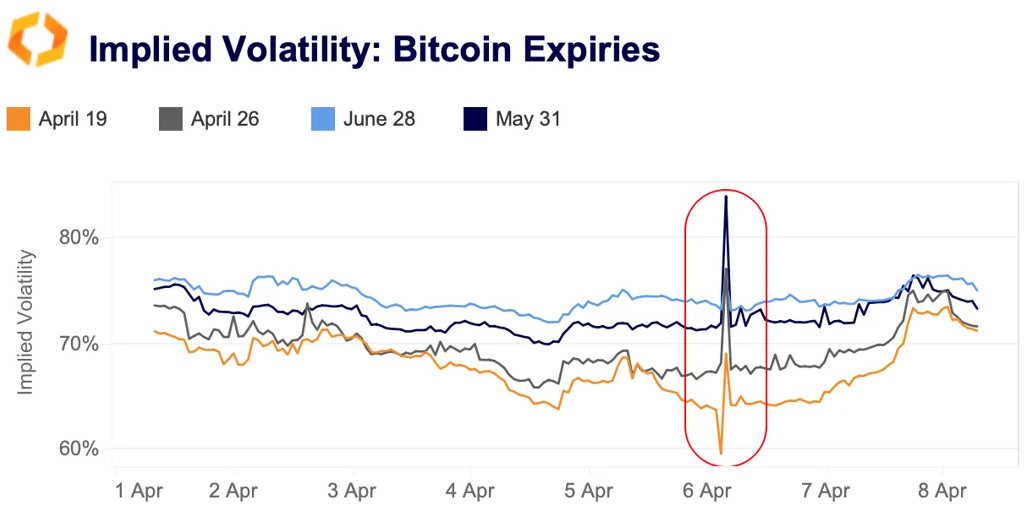
Perhaps the greatest uncertainty when it comes to predicting prices has been the huge success of the ETFs. 11 spot bitcoin ETFs have already become significant holders of the asset, representing more than 4% of the total supply. The question is whether demand will continue, putting additional downwards pressure on supply that when combined with the halving could create a real shortage. Looking at net flows for all ETFs excluding Grayscale's, we can see that almost every day has seen positive inflows, suggesting there is still strong demand.

Most outflows have been linked to Grayscale's GBTC, which holds a lot of BTC that had been locked in the pre-converted fund for years, so the trend is expected. However, in the case of a bearish reversal, BTC could flood the market, thus posing an uncertainty.
Ethena's ENA token sees strong rally post-airdrop
Last week, Ethena Labs carried out its governance token airdrop, ENA, for early adopters of its synthetic dollar USDe. Trading for the token began on April 2.
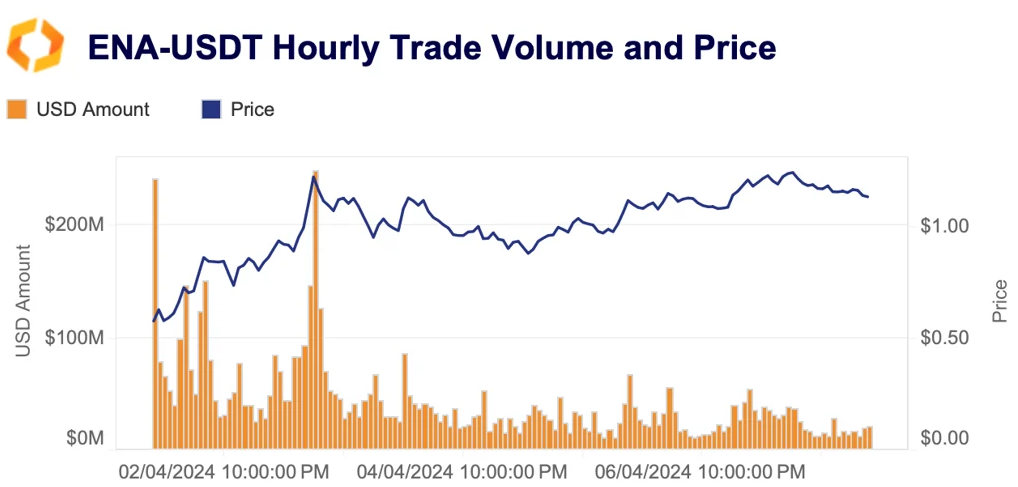
Typically, airdropped tokens will see an initial surge and then sell-off. ENA has bucked this trend and is currently trading above $1.1, up more than 97% relative to its launch-day value of $0.58. ENA-USDT trade volumes surpassed $200 million in the hours after the airdrop went live, but have since declined ten-fold to around $20 million.
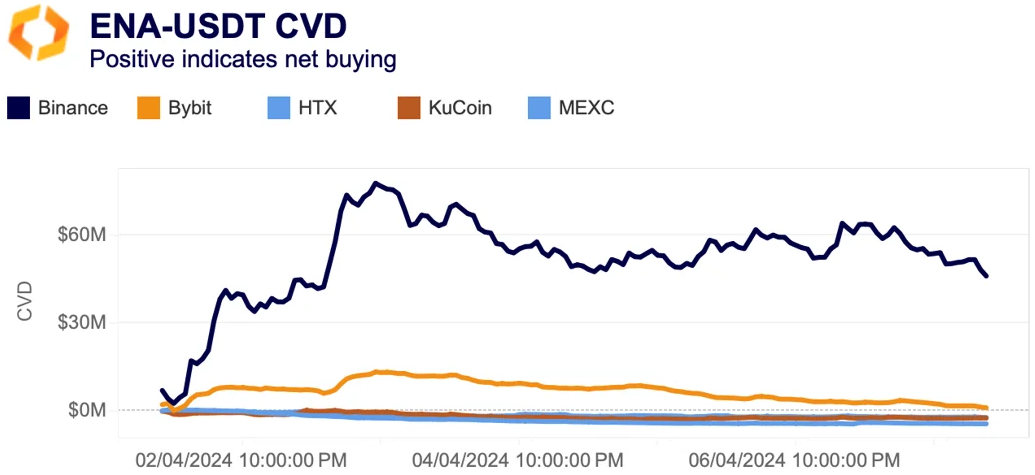
The cumulative volume delta (CVD) indicates that Binance saw the strongest buying activity for the ENA token, while smaller exchanges such as HTX and KuCoin registered net selling. ENA was listed for farming on Binance launch pool, which was likely one of the main drivers of its popularity on the exchange.
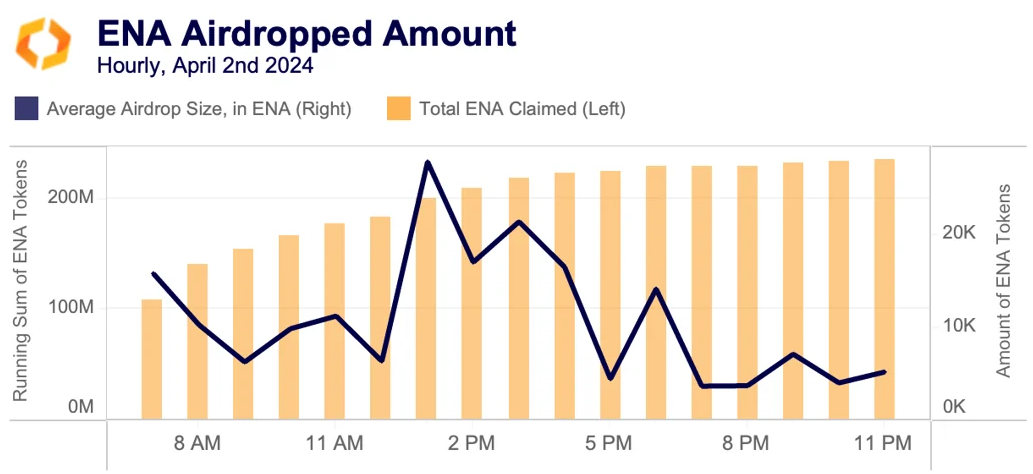
Throughout the day of the airdrop, users claimed 250 million ENA, with most wallets claiming tokens between 8 am and 1 pm, according to Kaiko’s Wallet Data. The average airdrop size was between 5k and 20k ENA.
Bitcoin and Ether open interest hits all-time highs
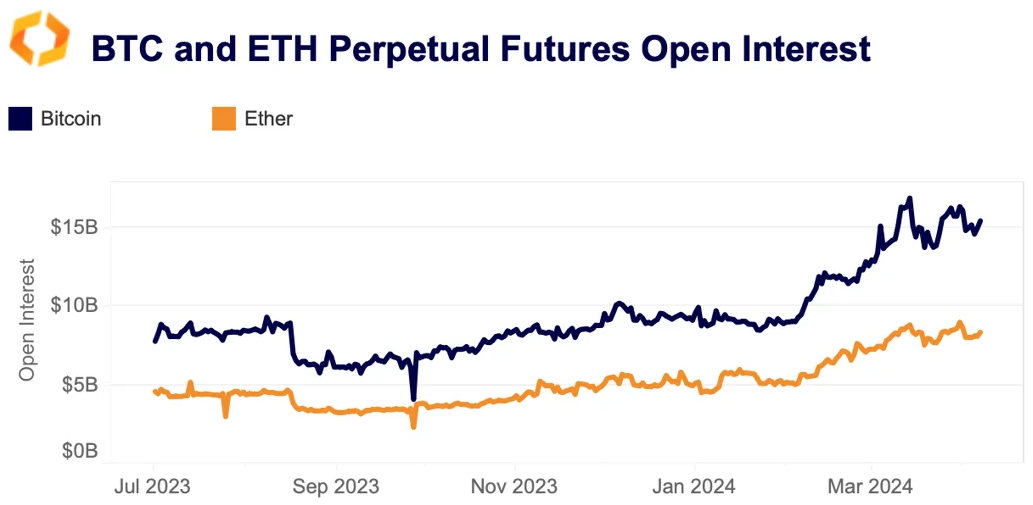
BTC and ETH perpetual futures open interest reached all-time highs in USD terms. Trading in perps has risen consistently since the beginning of the year, reaching a two-year high in early March before exceeding previous record highs.
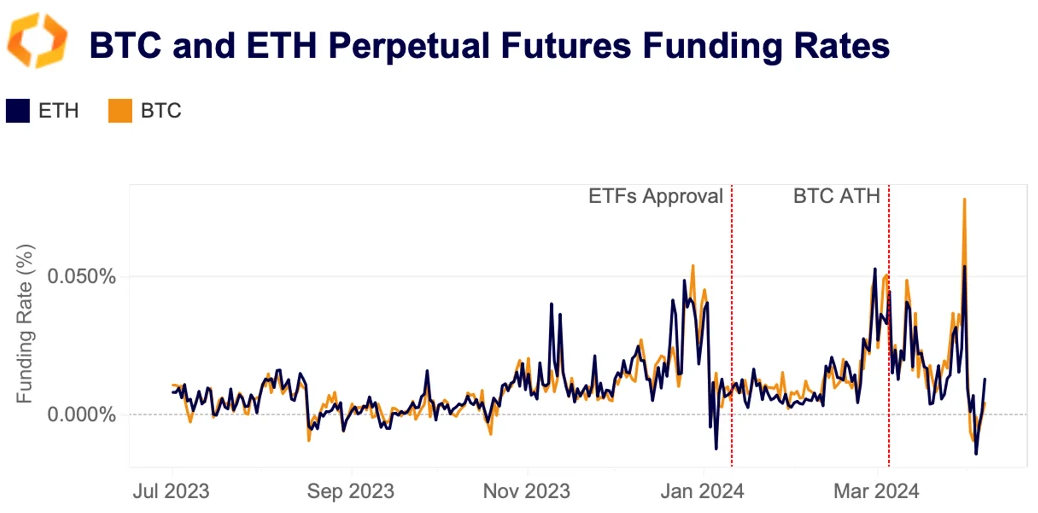
Despite the increased activity, funding rates for BTC and ETH fell last week. Lower funding rates suggest less excessive demand from bullish traders to take on more leverage.
BTC outperforms in risk-adjusted terms
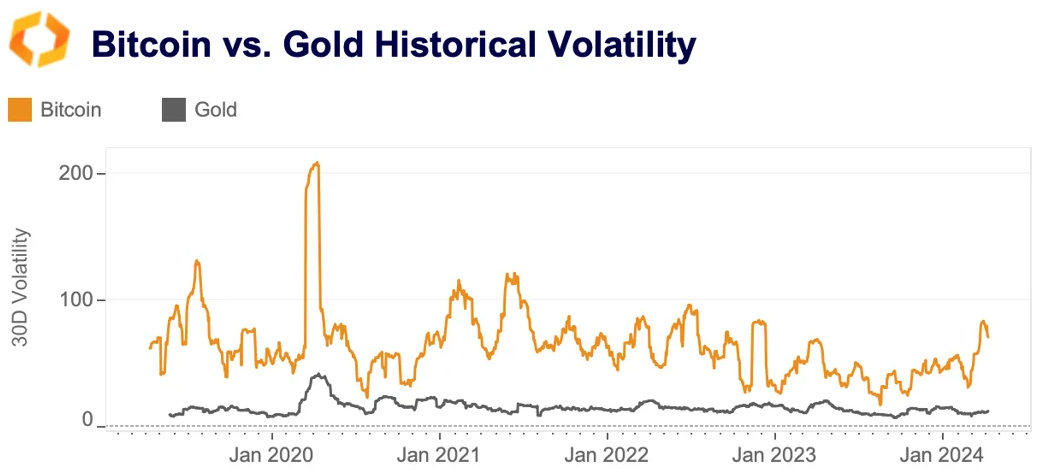
In early April, Bitcoin's 30-day realized volatility reached its highest level since late 2022, significantly surpassing that of traditional assets like gold. Despite this heightened volatility, crypto assets continue to offer strong risk-adjusted returns, with BTC outperforming most other assets. Notably, BTC has surpassed gold, and ETH has outperformed the Nasdaq 100, demonstrating that crypto investments can provide sufficient compensation for their volatility.
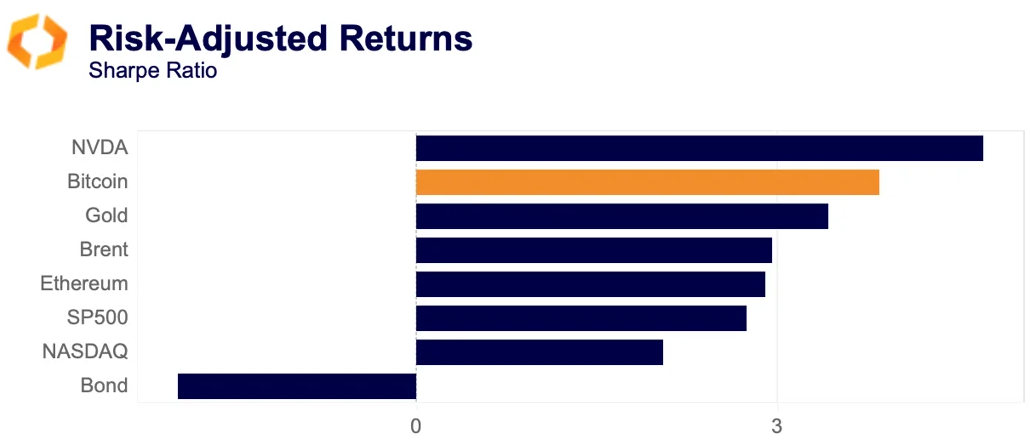
Currently, BTC is 4.6% below its recent all-time high (ATH), but it remains over 77% above its yearly low and has experienced an impressive 1318% surge from its 5-year low. The approval of spot ETFs has boosted BTC's credibility among traditional investors, with BlackRock recently adding Wall Street heavyweights such as Citadel Securities, Goldman Sachs, and Citigroup as authorized participants (AP).
ETH liquidity rebounds despite slow price action
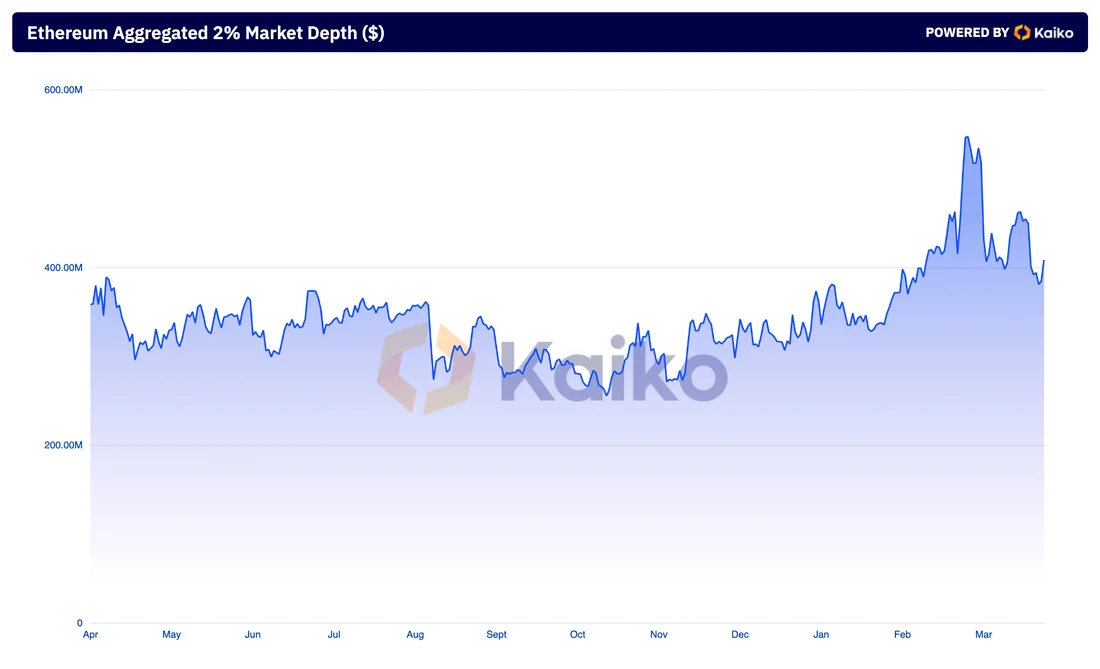
ETH has shown significant improvements in global centralized exchange liquidity, despite having slower price action than BTC and many altcoins. 2% market depth, which takes the quantity of bids and asks across 32 exchanges in our coverage, has increased from a yearly low of $255mn in October to $400mn today. Market depth hit a multi-year high in March as ETH briefly crossed $4k. Overall, it is clear market makers have returned and traders are enjoying improved liquidity.
Gold-backed tokens see little interest despite ATH prices
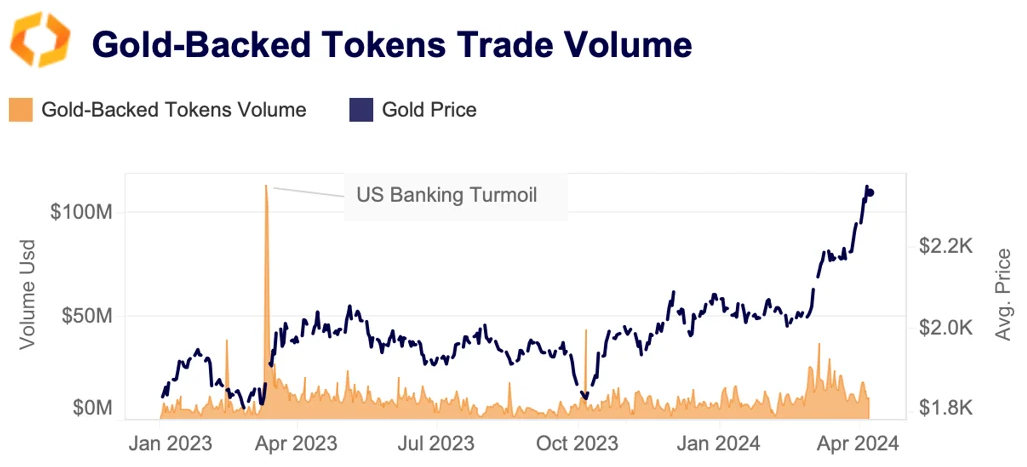
Despite the price of gold hitting record highs, the trading volume of gold-backed crypto tokens has not managed to surpass peak levels hit during the initial stages of the Russia-Ukraine conflict in February 2022. Interestingly, the combined volume of the two major gold-backed tokens, PAX Gold (PAXG) and Tether Gold (XAUT) has retreated in the second half of March, despite the continued increase in spot prices. The trading volume of gold-backed tokens is significantly lower than that of fiat-backed stablecoins, which remain the preferred safe haven for crypto traders.








